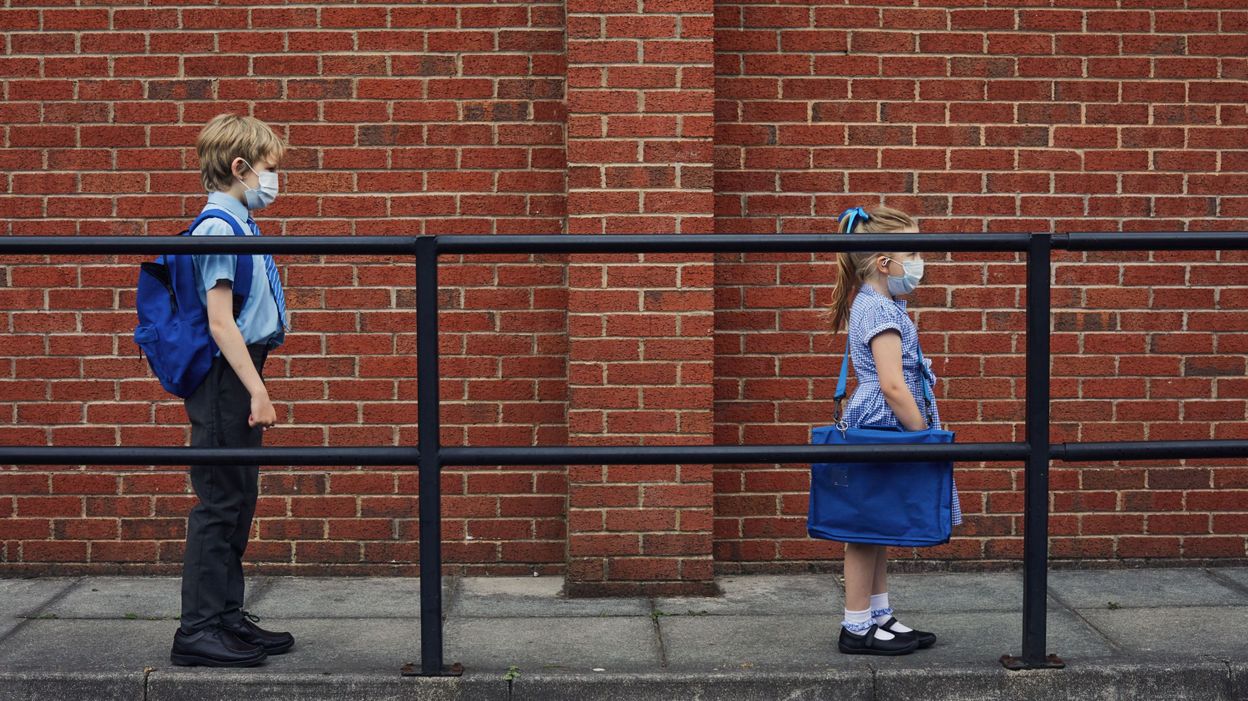We were used to hearing that “children are not the driving force behind the coronavirus epidemic”. And then, this Monday, December 7, during his now traditional conference, Yves Van Laethem, interfederal spokesperson for COVID-19, reporting increasing numbers among children (+ 46% among 0-9 years old, + 10% among adolescents), called for vigilance in schools : “In absolute quantity, it is not very edifying, but it is still to be noted. We must therefore not let our guard down in schools.”
The next day, it is Doctor Thomas Orban, president of the Scientific Society of General Medicine, who declares in l’Echo that he receives more and more sick children and that he thinks “that we minimize the role of schools in the transmission.”
Children are not the “driver” of the current increase
So what is it? This morning, the question was asked during the traditional conference of the crisis center. Yves Van Laethem wanted to be reassuring. In essence: children can obviously transmit the disease but they are less contaminating than adults. “Different studies have shown this, he explains, and Even today, the Lancet publishes a study carried out in England during the end of the first wave, which shows that transmissions in schools took place mainly between adults or adults to children, much more than from children to adults, and it reinforces this notion that if they can be transmitters, they are less so than adults.”
For Yves Van Laethem, the return to school of around 2 million pupils, or between 10 and 15 percent of the population, can obviously have an impact on the figures, but the children are not “the driver of the current increase, as several international studies have shown”.
We are in confinement everywhere, except in schools. It is one of the places where the virus can circulate.
Marius Gilbert, epidemiologist at ULB, agrees: “schools reopened on November 16, if there had been a link we could have seen a re-increase in cases and hospitalizations earlier. Likewise, there was a drop in cases during the All Saints holiday, but it also coincided with all a series of new measures put in place to fight the epidemic. Having said that, we obviously cannot say that school plays no role either.”
There are cases of transmission in schools, no expert denies it, continues Professor Dimitri Van der Linden, spokesperson for the Pediatric Task Force and infectious disease specialist at the Saint-Luc University Clinics, who recalls the context in which we are find : “for the moment, we are in confinement, almost everywhere, except in schools and hospitals (and more recently shops, editor’s note). It is therefore obviously one of the places where the virus can circulate.”Because, of course, who says school means contacts between people, and mobility too.
The professor also refers to the study published in the Lancet: “Elle shows that there are few epidemics in schools but that they increase according to the viral circulation in the community, that there is a strong correlation between the two. It is therefore important to control transmission in the community to protect the education system.” A study by KULeuven and Sciensano comes to the same conclusion.
For Marius Gilbert, the difficulty is to know if the schools are the receptacle of the transmission which occurs outside the schools or if the schools are the source of contamination towards the outside.
Information is still lacking on their role in the transmission of the virus
We must admit that we still lack important data. It is known that young children are less susceptible to infection (perhaps thanks to cross-immunity, antibodies developed against other viruses), and that they are often less sick, asymptomatic. We also know that their susceptibility gradually increases with age (hence the introduction of hybrid education from Secondary 3). But what precisely is their role in the transmission of the virus? Studies have (finally) been launched on this topic, particularly in Belgium, in order to be able to trace the thread of cases present in schools.
►►►Read also : Coronavirus: Belgians are moving again and the curves are “stabilizing” instead of decreasing
Pending the results, Yves Van Laethem calls this Wednesday once again for caution: “Lis cClose contact between generations, and particularly between small children and the elderly, should be avoided as much as possible. At school level, we must ensure that all measures to reduce transmissions are taken so that this impact is minimized. ”
–

